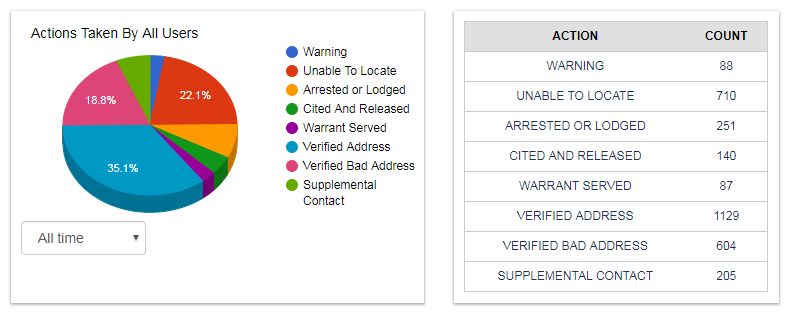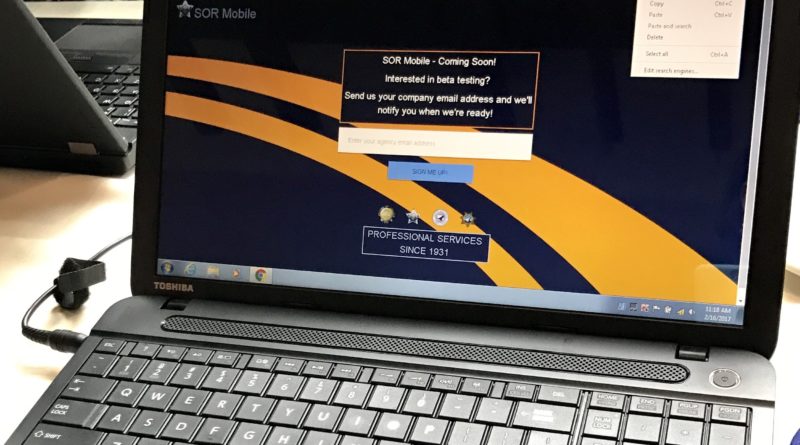OSP’s Sex Offender Registration Mobile App for Law Enforcement Won Gold
The Oregon State Police’s Sex Offender Mobile application for Law enforcement was awarded the Gold by the 2019 Oregon State Chief Information Office.

In 2014, the Oregon State Police began designing an innovative web application for law enforcement to help Oregon manage its sex offender population and enhance public safety. SOR Mobile, or SORM was created out of that design providing several new and innovative mechanisms through which the Oregon State Police Sex Offender Registry (SOR) could distribute and receive offender information. This new tool offers law enforcement organized data to efficiently target non-compliant sex offenders, assist with statewide sex offender sweeps and provide the ability to perform in-field registrations electronically, which was never available before. This project has improved law enforcement sharing amongst partner agencies, facilitated offender address verification, and expanded collaboration on investigations; assisting SOR in its implementation of the Sex Offender Registration Notification Act (SORNA) requirements.
The SORM application improves search functionality, making more pertinent offender information easier to find and access, and makes it immediately available in the field. It reduces the number of inquiries SOR staff receive by phone and email in regards to law enforcement partners trying to access offender records, ultimately making government operations more efficient. Electronically capturing law enforcement’s “actions taken” events against non-compliant offenders alleviates the manual dissemination of information previously required of SOR staff, and in-turn makes the information readily available to law enforcement.
Research conducted while developing the SORM application showed that 75.5% of partners sampled, would be more likely to take enforcement action on an out-of-compliance felony or predatory sex offender, with a mobile application alert. Additionally, 85.7% of sampled users would provide feedback data using a mobile app, such as “action taken” when using the app to make contact with sex offenders.
With the release of SORM in June 2017, all law enforcement that have access to a mobile device, tablet, or laptop can now see all registered sex offenders near them with just a few clicks using the SOR Mobile web app. Information provided through the application includes: current registration status, residence, photo, color coded compliance legend, registration history, location of employment, associated vehicles, and reported contacts by other members of law enforcement. Users can also subscribe to a specific offender for record updates or any updates for geographical areas.
From June 2017 to August 16, 2019 there were 3,214 contacts reported through SORM. These contacts are listed as “Actions Taken” and are defined and displayed in the table and chart.

The SORM project leverages the strength of crowdsourcing by putting a list of all Oregon sex offenders directly in the hands of every law enforcement officer in the state of Oregon. In addition, the need for costly preplanned, large scale, sex offender sweeps have been reduced by delivering a daily list of non-compliant sex offenders, to every Oregon law enforcement officer who needed one.
Smart features built into the application provide an easy way for Oregon’s law enforcement personnel to quickly engage in sex offender enforcement. One of the application features is called Alert Zones. This feature allows the SORM user to create a geographical area such as a 1-mile radius around a school perimeter, targeting all sex offender record updates associated with that location, and sex offenders within that radius. This information could not be obtained using the previous web portal tools.
The types of agencies involved in this cross-boundary collaboration and partnership project included: Cities, Corrections, County, Federal, Higher-Ed, and State. Users of SORM come from many types of agencies, which include Police Departments, School District Police Agencies; County Community Corrections, County Sheriff’s Offices, County Departments of Community Justice, County Parole and Probation, Oregon State Police, and the United States Marshals Service.
During the summer months when Oregon is susceptible to wildland fires, counties using SORM can use a mapping feature to determine the names and locations of sex offenders in evacuation areas. This data can then be used to maintain public safety when considerations are made for temporary staging areas during relocation efforts.
